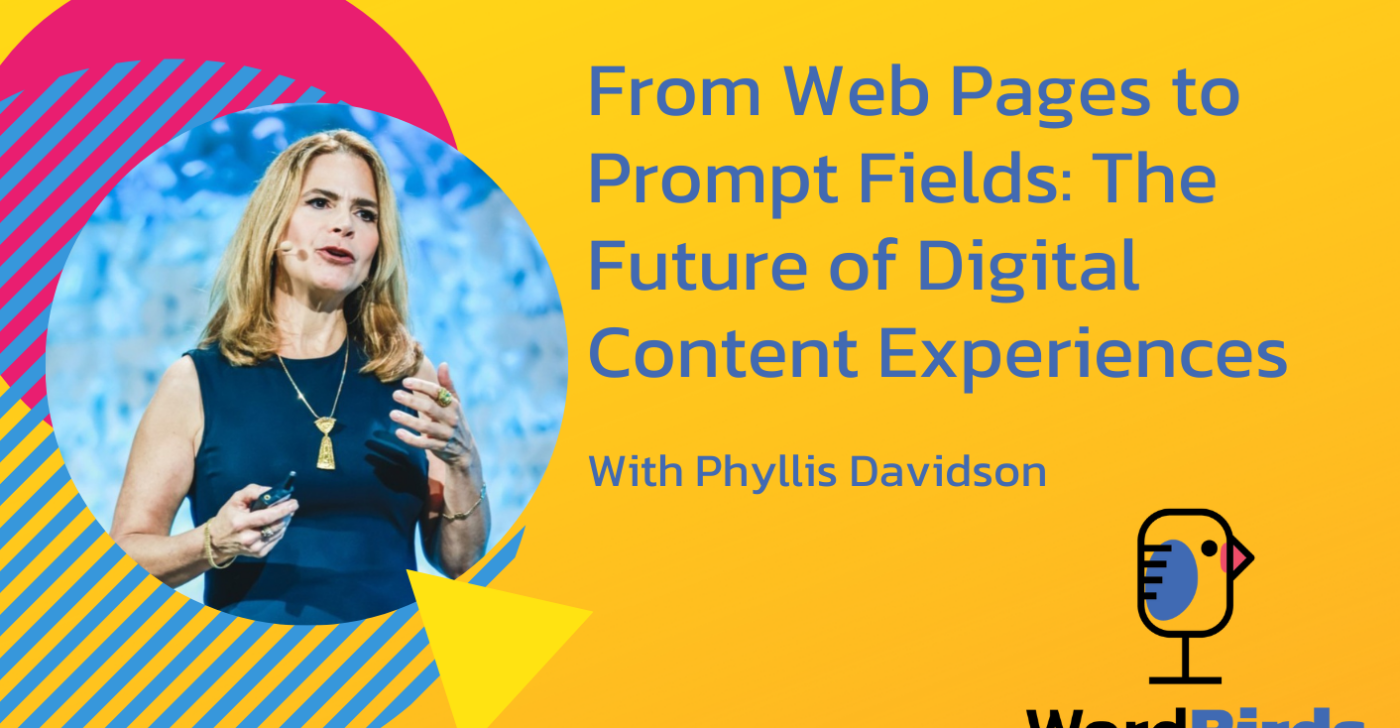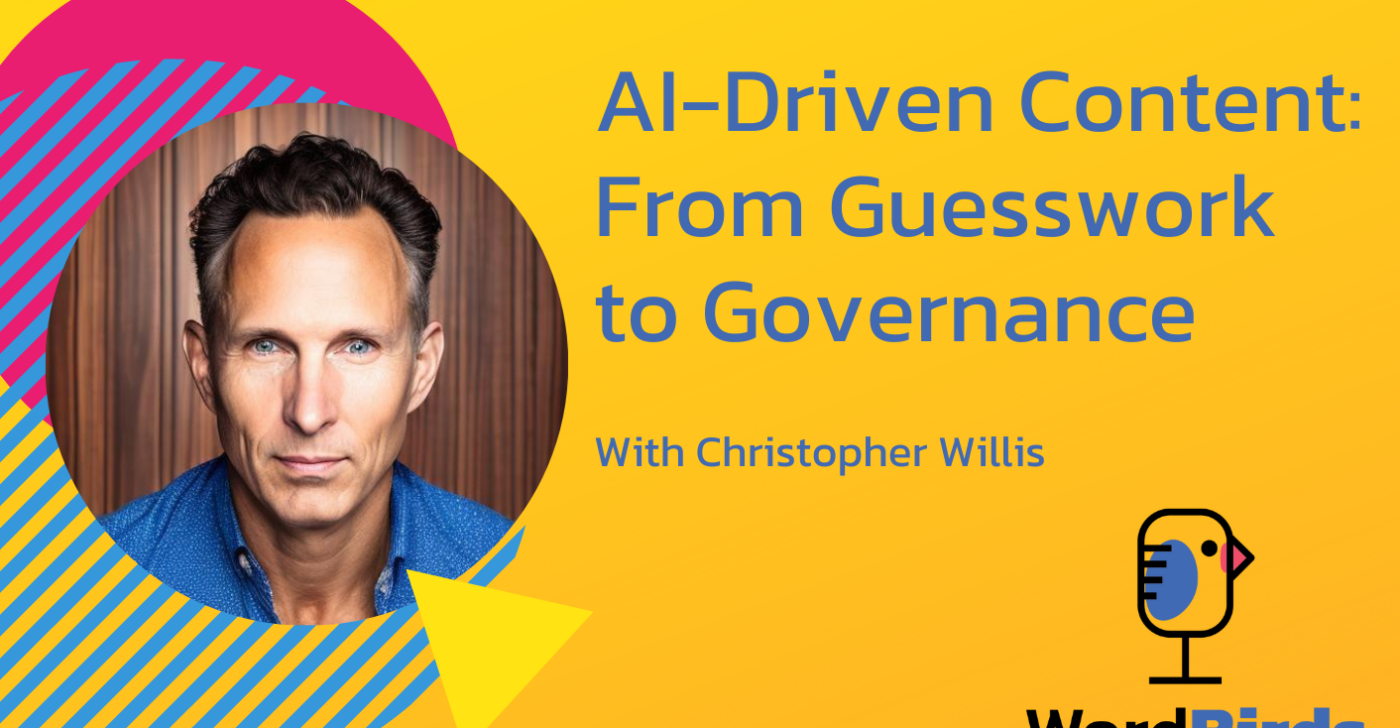Nowadays, almost every aspect of our virtual experience is pivoting towards AI technology. In this episode, we explore this topic in terms of content creation. Host Chris Willis chats with Ryan Sargent to discuss AI-generated content in terms of how it’s going and where it’s going.
Ryan is the Director of Content Marketing at Verblio, a multimedia content creation platform that powers modern content marketers and SEO agencies. The two talk about automation and machine learning and how they can help businesses create content. They also explore how every piece of content and every touchpoint is critical when considering the complexity of the customer journey.
Ryan also emphasizes the importance of process and how leaders can implement it in their own teams. Tune in for more valuable takeaways and tips to elevate how you create content for your business.
Watch the episode here
Listen to the podcast here
Read full episode transcript
Now on the show is Ryan Sargent. He is the Director of Content Marketing at a company called Verblio.
On the show, we’re going to talk about AI-generated content, how it’s going and where it’s going. We’re going to talk about machine learning and how that helps businesses create this content. Finally, we’re going to talk about how every piece of content, every touchpoint, is critical because you never know when your customer is going to jump into the conversation. Let’s sit back and get some insight from the flock.
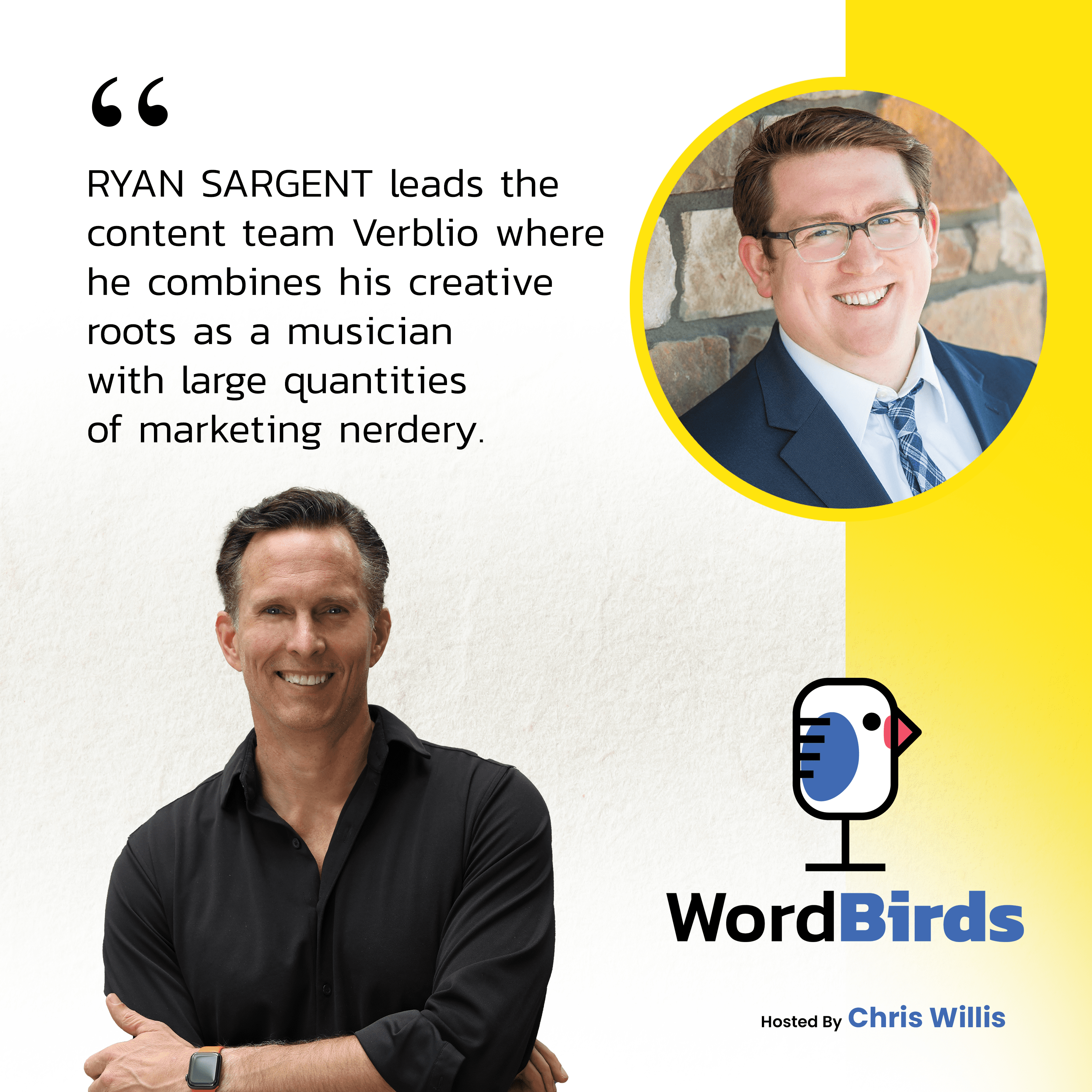
On the show, I got Ryan Sargent. Ryan, welcome.
Thank you so much for having me. I’m excited to be here.
First things first, I would like you to tell the people that are reading what Verblio does. I think it’s interesting, and I think the audience is going to think it’s interesting.
We like to refer to Verblio as the world’s friendliest content-creation platform, which is a fancy way of saying that we are a content-creation marketplace. We have thousands of writers, all in specialized areas. We connect those writers with folks who need great content, often long-form written content, blogs, eBooks, and things like that.
Our thought is that this gets you the best of both worlds. You are not paying for some boutique marketing agency. We’re in a totally different price range than that, where you’re going to pay $1,000 for a single blog post. At the same time, you’re not braving the wilds of Fiverr and Upwork, hoping that the writer you find is going to get the job done.
You also get the benefits of a marketplace that you’re not looking for a freelancer who you then get to negotiate a contract with and manage and wonder why they went on vacation two weeks before all the stuff was due. That stuff happens with the tech on our end. We manage the marketplace and writers, and they find you. You submit a brief. A Verblio writer writes on spec, and you can provide feedback, decline, accept, and pay for the stuff you accept. It’s a way to connect folks who need content with folks who build content in a way that hopefully is a win-win.
How many writers are on the platform?
More than 3,000 writers are on the platform. What we like to say is if we haven’t found an industry that we don’t have a writer for. I’ve seen articles on everything from celebrity gossip to crypto trends and financial planning. You name it. We have a whole team of legal experts who reviews articles for clients in the legal space to make sure those are authentic and correct. No matter where you are at, there’s a writer for you.
It’s something that my team should probably be looking into. I hope that they are reading. I have been getting a lot of incoming requests for comments from the media about AI content creation. You must have a position against AI content creation, maybe?
Yes and no. Are the robots coming for my job? I don’t think so. I don’t think robots are smart enough. Maybe that comes with a yet at the end of the sentence. We certainly have competitors that are focused on AI-generated content that the AI is putting together. By AI, it means machine learning algorithms are putting together words and sentences in a way that generates the words and sentences you should put on your website.
In general, I haven’t found that those measure up to the quality of human writers yet, particularly when you are measuring the content for that qualitative essence that determines whether or not people want to read it. From that perspective, maybe the robots will get there one day. We’re not there yet.
The places where machine learning and AI can be helpful to content creators, the humans, is topic generation, automation, and localization. There are places where this is a useful tool. We use and are starting to use AI more and more in terms of how we look at the future of content. At the same time, even on our biggest projects, the ones that have the most automation clients for whom we are producing thousands of pieces of content, tens of thousands of pieces of content even, we’re not using robots to put the words and sentences together. That’s a recipe for disaster writing that.
The promise of writing a book in seven days using Jarvis or ChatGPT seems exciting. I’m not sure that would work yet. Technically, like you said, there would be words that would fill out the pages of a book, but do you want to read that?
There are two paths there. One, do you want to read it because the information is good? We’re getting there, where the AI has made some strides, and then there’s, do you want to read it because it’s elegant, eloquent, and beautifully written that something that you want to engage with that captures you? That’s where the robots are even farther away.
The challenge is figuring out how to get from some of these places where AI is useful, like topic creation and move down the road with it. It’s something that there are these cool open source tools out there. We have folks on our team playing around with AI now, almost in their spare time, so that we know what’s coming and what’s possible. That led us more and more to the conclusion that you want humans writing the words, and you want AI helping them on the backend with some of that automation in the planning.
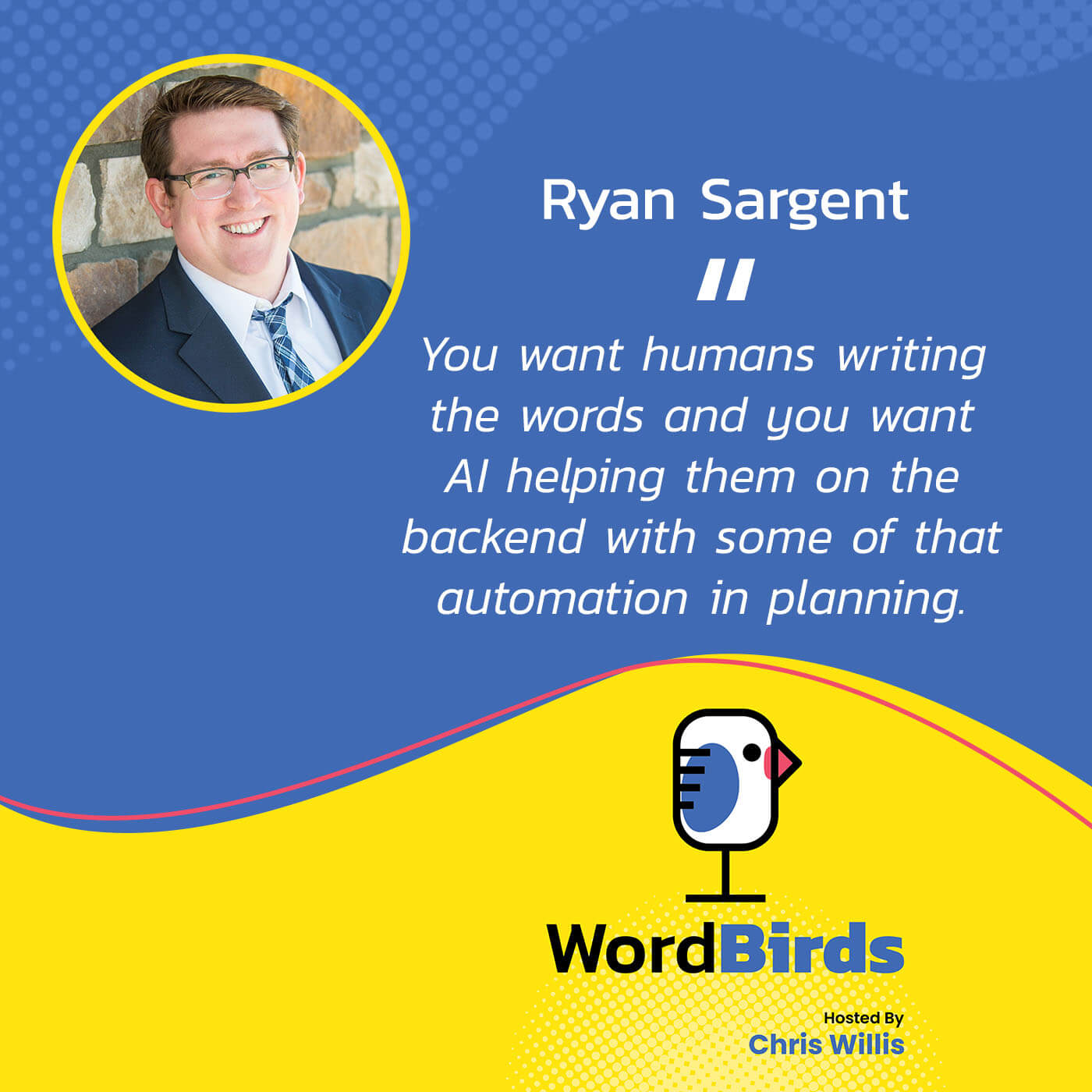
The interesting thing you said is, “Is it engaging? Is it something that people want to read?” What plays towards what you do in your career is running content for Verblio and looking at that engagement model across the customer journey, the differences in content that creates initial awareness and engagement that drives somebody through the funnel. Talk to me a little bit about your customer journey.
I’m the Director of Content Marketing at Verblio, which is a fascinating puzzle. Not only am I marketing to other marketers, but I’m doing content marketing for the content marketing company, which is a whole other layer.
That journey piece is important to me because content so often is the first interaction that folks have with your brand, and that’s a good thing. I would much rather people interact with my content but not a billboard, for example. Except in rare cases where billboards represent content, and then that’s a whole different can of worms.
If the first interaction is with a piece of content, I want that content to accurately reflect what’s going to happen all the way through the purchase and then post-purchase. In the case of this SaaS tech-enabled world that I’m in, the content has to continue. The email newsletter and articles and the content in the email newsletter that they’re going to see years from now that I want them to share with their friends so that we generate another customer needs to be part of the same stream as that first piece of content that they found on LinkedIn or through organic search.
By connecting all those dots, we are going to end up with a much more branded and wholesome experience from start to finish. There’s a lot of stuff that happens in the middle, and that requires buy-in across a lot of teams. For example, onboarding emails from customer success now need to look, feel, and speak the content that drew people in the first place, and managing that brand voice is a challenge.
The thing that creates complexity is people’s lack of attention to content in general. You’re building something that is timed specifically for the middle of the funnel, but you still need to take into consideration the fact that it’s likely the first thing that they are going to see because they may not have paid attention to the things that you think got them there.
You can’t start in the middle of a conversation. Everything needs to be part of a full story, at least a little bit because I might jump in at that point. Taking it back even further, the things you created at the beginning of this conversation need to educate the future, but the future needs to look back. It becomes very complex.
Ashley Faus, she’s at Atlassian, and she’s fond of calling that a content playground where you don’t know which toy they are going to pick up first. To some extent, classifying your content as top of funnel or bottom of funnel becomes a real challenge. As soon as you do that, some customer is going to start with a piece of “bottom of funnel content.” My takeaway there’s that all the more important that you build content that serves that narrative and story throughout.
If it’s not all equally as impactful, the analogy is that people spend all this time, energy, and money at the beginning of the dating process online. You’re putting everything into getting the perfect pictures and everything, and then you show up on that first date in a weird outfit, ripped jeans or whatever. You spent all that time upfront to create an impression, and then you stopped creating an impression for a specific moment, but each moment is as important as the next. You can’t let anything fall. You are on the hook in your role for making sure that every touchpoint that you have is as important as the next one is as engaging so that if that is the thing that’s going to move the needle, if that is where the impact is going to happen, it happens.
I’m very lucky I get to work with some brilliant folks in terms of the branding piece. At the same time, we are fighting this uphill battle because the people that we are trying to attract or target audience are marketers. If we step in it, they know. I used to be a musician, and that was what I went to school for and where I come from that creative background, and I keep thinking about how hard it is to play music for other musicians.
Sometimes you can blow right through a wrong note, and people miss it. When there’s a musician in the audience, they always catch it, and the same thing is true for my team in terms of building content for other content marketers. It’s led to this incredible emphasis on authenticity. It’s not something that we want to read ourselves. We’re not going to produce it. It has to be something that’s providing value in that way, and that’s where we are maybe a little lucky, that we get to be our own critics there.
First of all, on the music side with the wrong note, I like that. I’m coming from a music background as well. I live for that. There’s a one-beat missed in a song on Alanis Morissette’s first album. Taylor missed one drum beat, and they left it in. That is the high point of that album for me. The complexity of this whole process plays out that you need that oversight over all those touchpoints. We see that in our everyday life in what I do because we’re about AI governance.
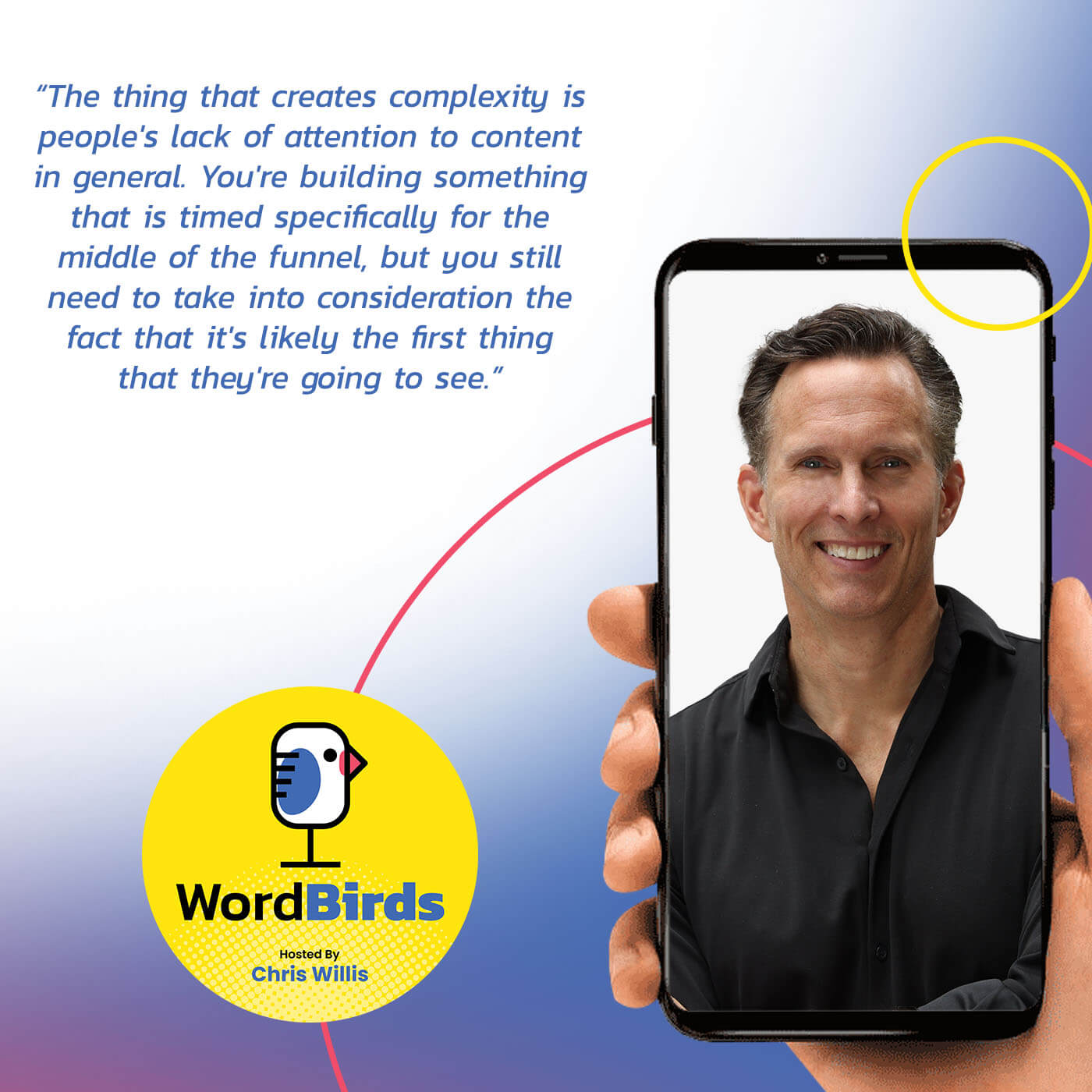
We’re putting that layer of alignment over everything we do so that the things like tone of voice, clarity, consistency, and terminology are aligned throughout the process, and that process doesn’t start or stop. It has to follow, and the add to that, it’s different for different people. You’re marketing to marketing, but there’re various folks that are going to be recipients of this content that are looking for slightly different tones of voice, use different words or different parts of the language. Being able to target specifically at them to engage those people at the right time, that is that next level above that creates the next piece of complexity.
It’s the technique of an inside joke. Nothing builds trust and authenticity like an inside joke. You also can’t come up with one off the top of your head. It has to be experienced and lived. That’s a key lesson for content marketers. It’s one that the robots will perpetually struggle with.
All I can think of is if a robot doesn’t know Fletch quotes, I don’t know what to do with them. You do come from a music background. Tell me a little bit about that.
I played trombone, the world’s sexiest Instrument. I started playing when I was ten years old. I always enjoyed and loved it. I went to school and ended up getting a degree in it. That was in Texas. I moved to Colorado for grad school to keep playing and ended up making the jump to content marketing when a music software company in town needed someone to understand their target audience. I said, “I’m your target audience, and I’d love to see what happens.”
What I learned is that so much of what I love about making music translates perfectly to content marketing. You practice, work as a team, and build this beautiful thing that you are deeply invested in. If you don’t show it to the right audience, you are not going to end up with anything in the tip jar. Content marketing becomes not just about the product but about how you distribute it and how you self-promote. There are so many parallels with making music, and that’s become the direction for my career. The best part is that the benefits of marketing are much better than the benefits in terms of playing jazz. I still play actively in the Denver and Colorado area. I play with the Funk group. Luckily I don’t have to do that from 9:00 to 5:00 Monday through Friday.
Content marketing becomes not just about the product, but about how you distribute and how you self-promote. Click To TweetMaybe it will work out, and you’ll end up getting that gig for real and get millions of dollars either way. What is one piece of advice that you would give to somebody that’s coming into a role like yours that you wish you had when you started that would be transformative to you now?
It’s impossible to underestimate the importance of process for content marketing leaders. Like I said, coming from that creative background, I tend not to necessarily be process-driven. I want to build, go, and do. Managing process is the biggest thing that’s different from being on the team to leading the team. If you are leading a content marketing team, invest in process, make a part of every single day, and it will pay dividends on the other side.
It is impossible to underestimate the importance of process for content marketing leaders. Click To TweetWhere do you come in on overall governance from a content strategy standpoint, aligning everything you’re doing across all of your content?
It’s a big part of my role, and to that extent, everything is content. That feels daunting and tough to get buy-in for. The way to go about getting that buy-in is to serve your internal customers. If I go a couple of weeks even without talking to the sales team and getting a feel for what they are experiencing on a week-to-week basis, I’m not doing my job.
The same goes for teams like customer success or account management. If I’m not plugged in with them and doing them a service and providing value internally for them, then I’m not able to show them that content is part of their job. I say all that coming both from a background as an in-house marketer and an in-house marketer now. In the agency world, it’s a little different. I think about internal customers, and I think about them as customers. I need to attract and provide value via content for it. Sales is a great example.
Ryan, this has been awesome. Thanks so much for being on this show. How would people find you if they want to catch up and follow up on this conversation?
You can find Verblio at Verblio.com, and the best way to find me is on LinkedIn.
Thanks for being here. I hope you have a great weekend coming up. Let’s stay in touch.
I love that. Thanks so much for having me.
Thank you.
Important Links
About Ryan Sargent

Ryan leads the content team at Verblio, where he combines his creative roots as a musician with large quantities of marketing nerdery. When he’s not pondering Verblio’s content strategy, you can find him playing jazz and funk trombone throughout Colorado.

